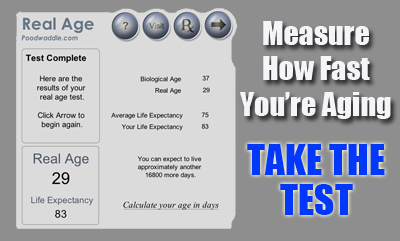 |
Your Virtual
or Real Age shown by the Real Age Calculator can
be used to determine your health, care for your body, vitality,
life expectancy and the best way to lose weight.. Consider this a
true age test based on gender, weight, build, biological age,
stress, sleep, cholesterol, blood pressure, smoking, CAD history,
heart problems, digestive tract, Diabetes history. Your life
expectancy increases in years as you click on the calculator, based
on your answers. The lower this mental age test software shows your age to be the better your
physical condition.
Whether or not you are in treatment,
recovery, a weight loss program or diet plan, it can be used to
calculate the life expectancy
of someone of your current physical age. Take the true age
life expectancy test now! |
